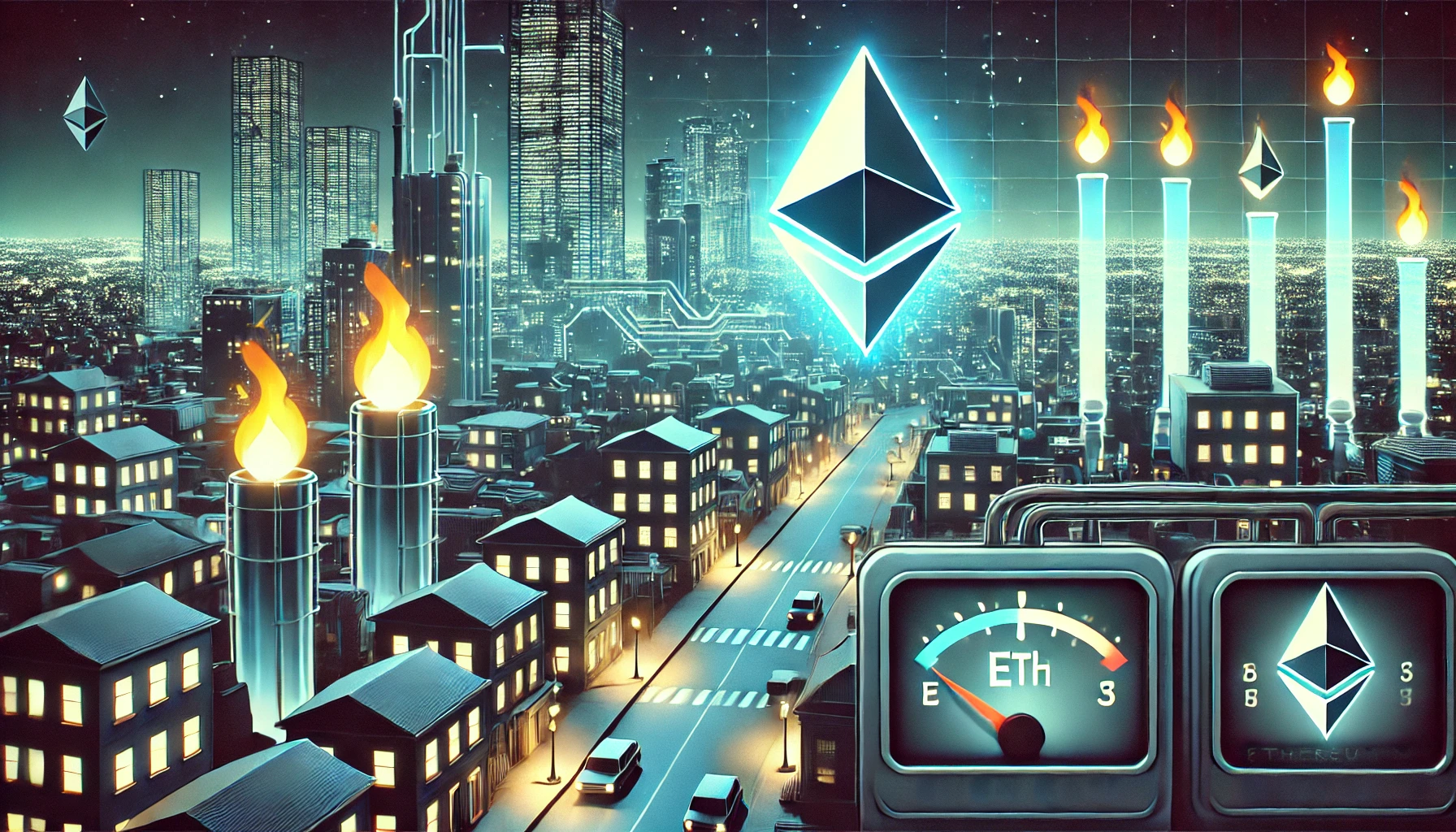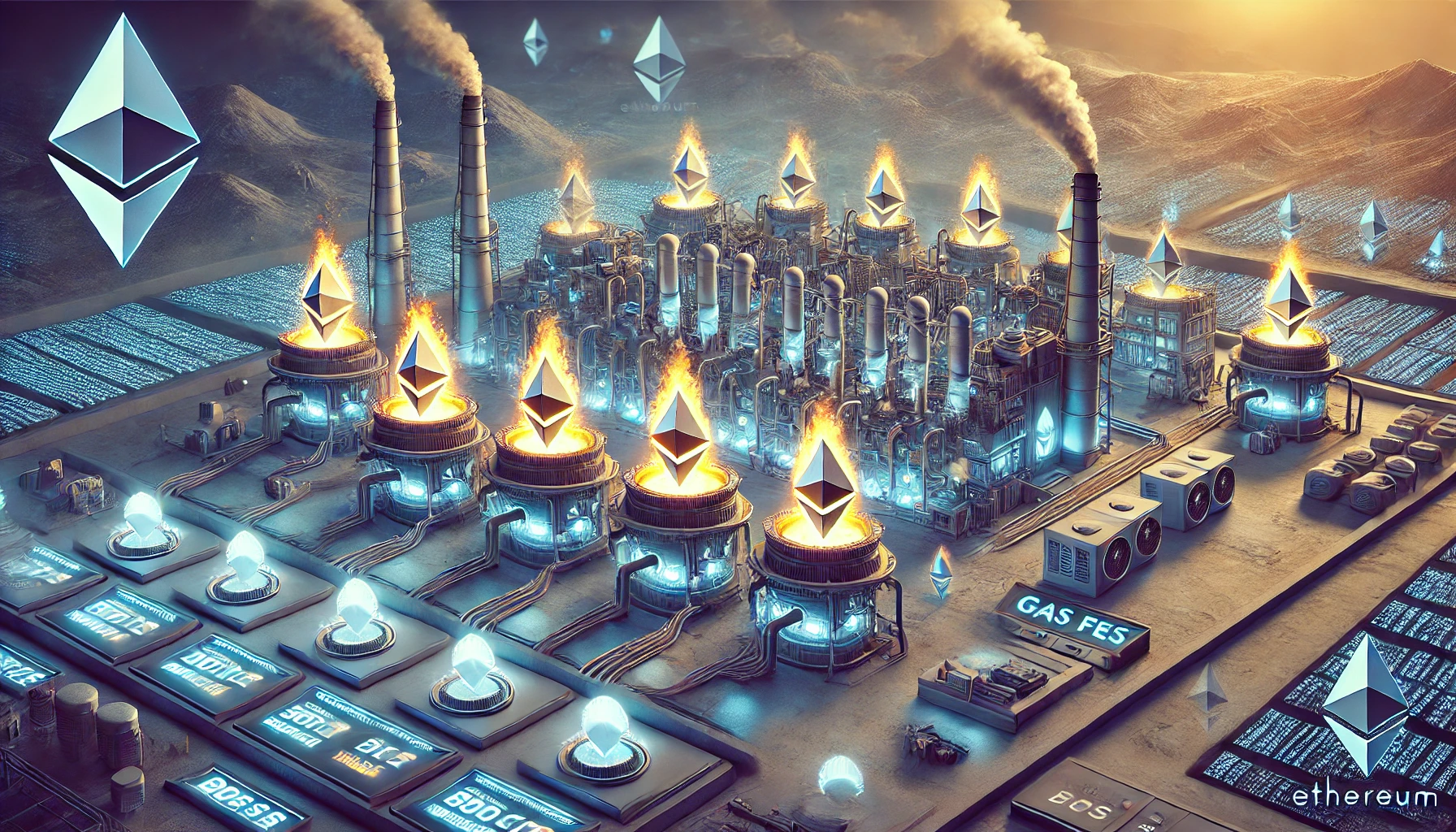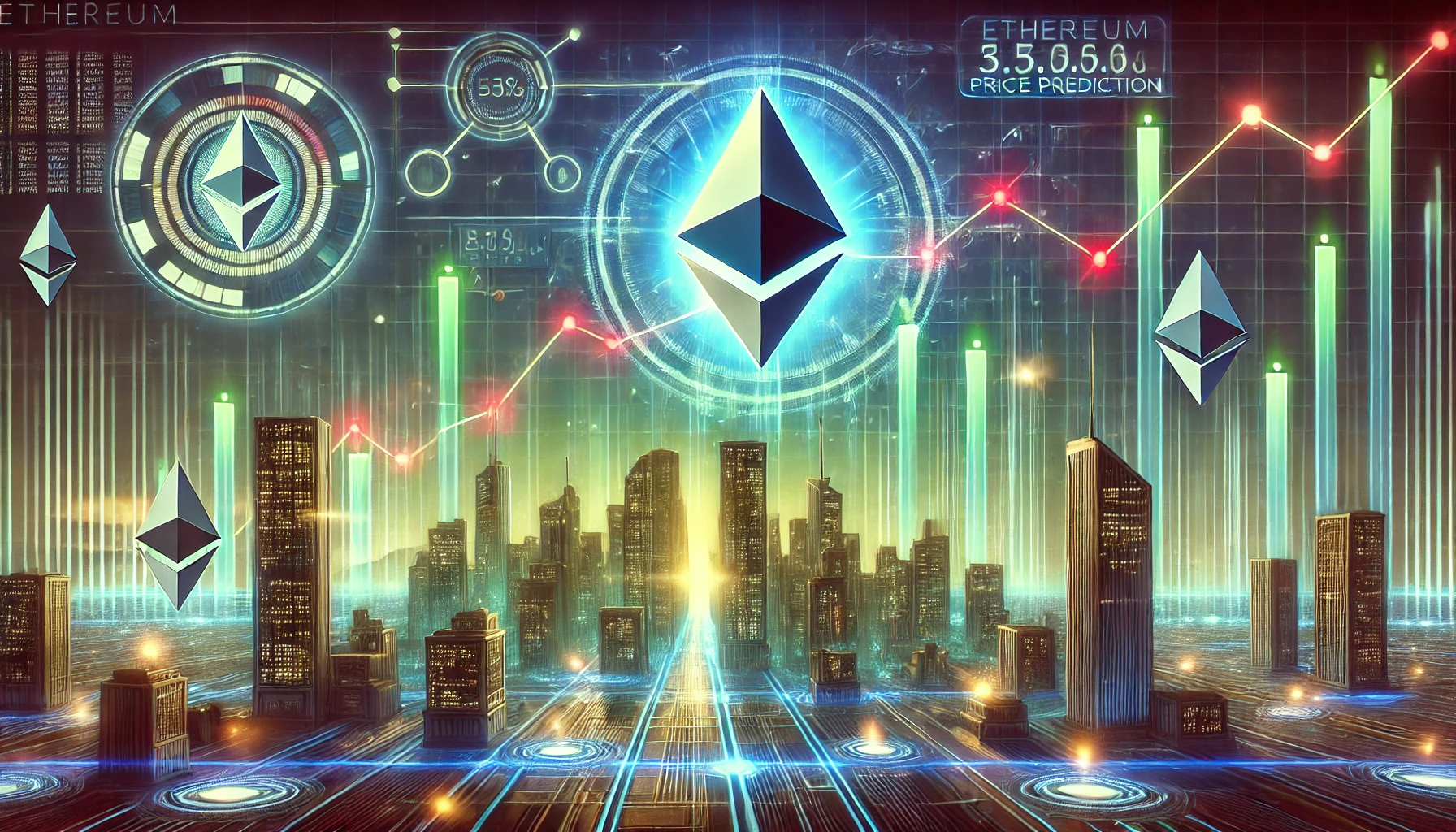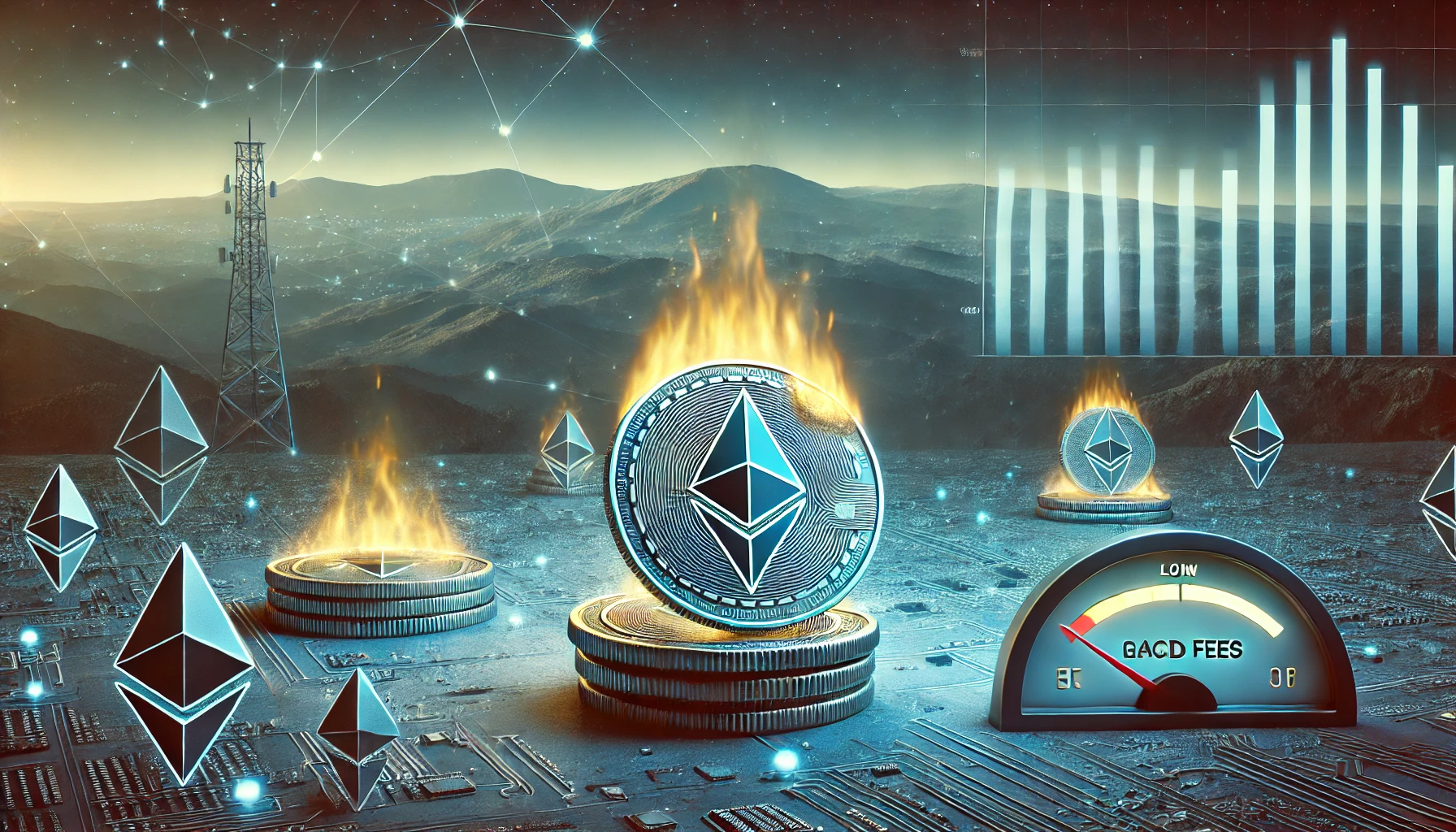The daily burn rate of ETH on the Ethereum network has reduced to its lowest levels in the current financial year. At the moment, gas fees vary from 1 gwei to 2 gwei, which significantly affects the emission of Ethereum. On Saturday, only 210 ETH was burned which is drastically lower compared to over 2,000 ETH net emission observed, pointing towards these low gas fees.

Record Low Burn Rate and Its Implications
As of now, the burn rate of Ethereum, up by 5.55%, has plummeted to its lowest point this year. According to data from The Block, this decline is primarily attributed to base fees hovering at all-time lows of around 1 to 2 gwei. Such minimal gas fees have a direct correlation with network activity; lower fees generally result in fewer ETH being burned. For instance, on August 5, ETH burn rates spiked to 5,000 ETH when gas fees reached approximately 100 gwei.
On that particular Saturday, while only 210 ETH were incinerated, net ETH emission exceeded 2,100 ETH, signaling an inflationary trend within the network. Amidst this inflationary pressure, Gnosis founder Martin Köppelmann has proposed the idea of temporarily increasing the gas limit. He pointed out that with the base fee lingering around a multi-year low of approximately 0.8 gwei, a gas fee of 23.9 gwei would be essential to counterbalance staking rewards. Köppelmann emphasized the need for Ethereum to stimulate more Layer 1 activity, suggesting that raising the gas limit could be a strategic move, even in the face of such low rates.
Impact of the London Hard Fork
This situation reflects a broader trend in the network’s mechanics, stemming from the changes introduced by the London hard fork (EIP-1559), enacted in August 2021. This upgrade implemented a dynamic fee model that burns a portion of the base fees paid for transactions, while also incorporating a priority fee, or a ‘tip’, for validators. Therefore, as network activity increases, base fees—and consequently, the amount of ETH burned—rise.

The recent decline in gas fees has been attributed to users increasingly migrating towards Layer 2 scaling solutions and adopting blob transactions, a feature that was introduced in the Dencun upgrade back in March. These changes have substantially lowered costs on Layer 2 networks, further influencing overall network activity on Ethereum.
In the current market, ETH is trading at around $2,540, showcasing a nearly 10% increase year-to-date, with a total market cap of approximately $305 billion, as reported by The Block.
Analyzing Future Trends for Ethereum (ETH)
According to Crypto Potato, there are signals from the futures market suggesting that Ethereum may be on the verge of a rally. Analyst Shayan from CryptoQuant has observed notable metrics in the futures space that could indicate an upward shift in the asset’s price. He noted that ETH recently experienced a substantial liquidation event, which, according to historical patterns, is often linked to subsequent price rallies as the market stabilizes and buying pressure in the spot market increases.
ETH’s price had previously taken a dive, losing around 34% of its value earlier this month. Data from CoinGecko highlighted that the price plummeted from $3,329 down to $2,197. The dip led to speculation among investors regarding the cryptocurrency’s potential for further decline. However, significant buying interest in the vicinity of $2,100 provided a slight recovery, pushing ETH up to approximately $2,500. At the time of this report, ETH was trading at around $2,623, reflecting a 2.3% decline in the last 24 hours.
Despite some recovery, the futures market data hints at the possibility of a more pronounced rally for Ethereum. The recent downturn prompted large-scale liquidation of long perpetual positions, reaching a level not seen since November 2022. This liquidation suggests that the futures market is beginning to cool off, flushing out many leveraged positions. Shayan posits that with this reset in the futures market, renewed demand could propel Ethereum into another bullish phase.

In terms of price outlook, while Shayan remains positive about ETH’s potential for recovery, the asset’s daily and hourly charts might suggest otherwise. Ether has shown strong bullish support at the critical $2,100 level, with robust demand near the $2,000 mark, which signifies investor confidence in its long-term viability. Nonetheless, ETH faces resistance at the $2,800 threshold, as this level includes the previously broken lower boundary of a wedge formed during its recent downturn.
A recent analysis on CryptoPotato indicated that while Ethereum is regaining momentum, the $2,800 resistance could stall its upward trend and lead to a corrective move toward the $2,000 support level.










